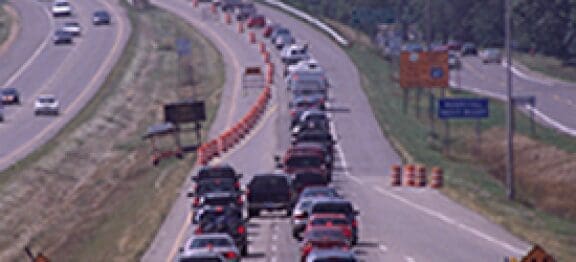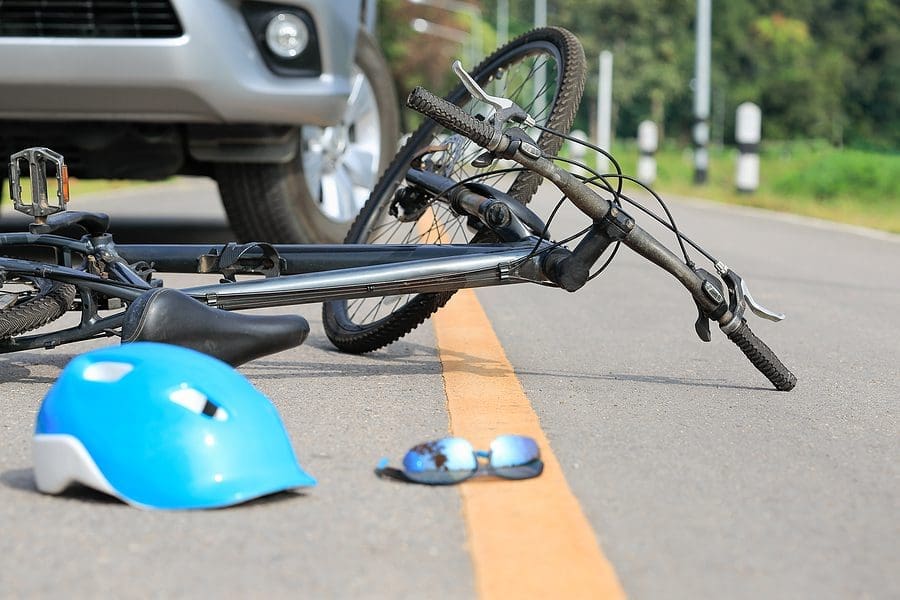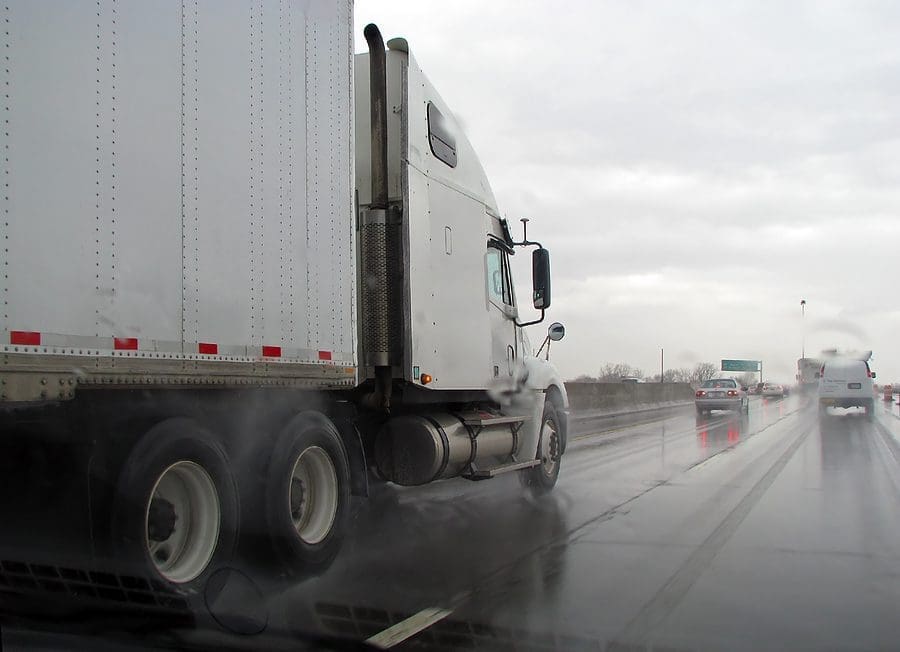JONES LAW GROUPYour Lawyers for Life! Personal Injury Law Firm in St. Petersburg

By: Heath C. Murphy + – Personal Injury When you are driving, usually towards a construction zone or some other choke point in the road, when is the appropriate time to merge for the lane of traffic which is ending? There are two schools of thought when it comes to this subject. One school of […]
Call our personal injury law office directly at (727) 512-9847
At Jones Law Group in St. Petersburg, FL, we would like to hear from you. Contact us for a free personal injury case consultation.
Call our personal injury law office at (727) 512-9847
Get educated on the Florida's personal injury laws and more.
By: Heath C. Murphy + – Personal Injury
When you are driving, usually towards a construction zone or some other choke point in the road, when is the appropriate time to merge for the lane of traffic which is ending? There are two schools of thought when it comes to this subject. One school of thought is to merge early and avoid driving all the way to the choke point. The other school of thought is to use every bit of the ending lane without coming to a stop and then merging. I have discussed this subject with numerous people and I have come to one concrete conclusion. When to merge draws a visceral response from most people. I am going to explain the logic from each point of view and then I will tell you why both types of mergers are correct.
Merge Early
There is a common sense appeal to the idea of getting in line when you see that sign that says “Merge Left – 1500 Feet.” It makes sense that if an orderly line is formed early that the flow of traffic will not be impeded. The logic follows that those that go all the way down the lane which is ending and attempt to merge late causing a bottleneck at the choke point. It makes sense, right. We have been taught all of our life to get in line early and that cutting is rude. Some states, such as California, endorse early merging because late mergers slam on their brakes as their lane ends which result in rear end collisions.
Merge Late
There is another school of thought which says you should merge late. When two lanes merge into one it is called a zipper merge. The late merging school of thought states that utilizing the ending lane all the way to the choke point will decrease the traffic jam that exists before the choke point. This traffic jam is caused by early mergers cramming themselves into one lane when two are available for travel. The late mergers would also argue that the early mergers refusal to allow cars that they deem to be cutting into line actually causes the traffic accidents. Minnesota has performed extensive research on zipper merges and has concluded that the late mergers benefit themselves, as well as traffic in general. Furthermore, the early mergers seem to be more prone to fits of road rage because of the cultural disdain for those that cut in line.
Who is Correct?
Both schools of thought have their advantages. The studies that have been done seem to indicate that if traffic is moving at a normal or close to normal highway speed then it is best to move over early. If traffic is moving at a slowed pace then it is best to use both lanes all the way up to the choke point. This zipper technique requires cooperation from all drivers. The drivers who have already merged need “play nice” and let the late mergers blend into traffic. The Minnesota study indicated that if cars utilized the zipper merge technique traffic backups could be reduced by as much as 40%. [1]
Contact Jones Law Group
Have you or a loved one been injured in an accident? Contact an experienced St. Petersburg personal injury lawyer at Jones Law Group today. When you contact our office we will immediately set an appointment where you will meet your attorney and be provided with his/her personal contact information. If you do not have transportation or you cannot drive, your attorney will travel to meet you and discuss your case with you.
Whether you were a pedestrian, a bicyclist, or the occupant of car, motorcycle or boat and have been injured in an accident, you should immediately call an experienced personal injury attorney in St. Petersburg at Jones Law Group at (727) 571-1333 during regular business hours or (727) 753-8657 on weekends or after regular business hours. We will evaluate your case for free and you will never pay us a dime unless we recover compensation for your injuries.
Jones Law Group
5622 Central Avenue
St. Pete, FL 33707
References:

Bicycling is a popular sport in Florida, particularly in coastal areas such as St. Petersburg, Clearwater, and our local beach communities, where the weather is mild year-round, and the scenery is good. Tourists and locals alike enjoy bicycling in Florida because not only is it fun, it provides a cardiovascular-intensive workout, and people of all […]

Florida Bicycle Accident Statistics In 2018, there were 857 fatalities from bicycle accidents in the United States. Florida accounted for the most bicycle related deaths, with 16% in 2017. What makes Florida so dangerous for bicyclists, and what kinds of injuries are causing these deaths? In a recent survey of Florida cyclists, they found that […]

Anyone who has slipped and regained their footing knows the sense of relief that comes with narrowly escaping a fall. Unfortunately, there are also plenty of times we can’t brace ourselves fast enough, and the consequences can be much more serious than a little shock or embarrassment. Slip and Fall Statistics Twenty percent of falls […]

By: Heath C. Murphy + – Personal Injury Collectively, semi-trucks travel about 140 billion miles per year, delivering goods in the United States. One-third of all U.S. semi trucks are registered in Florida, Texas, and California. Obviously, semi trucks are a necessary component of the economy, but when trucks are involved in accidents, the results […]

Drowsy truck drivers pose a threat to other motorists, pedestrians, and bicyclists because they are more likely to exhibit poor judgment, maneuver recklessly, or fall asleep behind the wheel. Driver fatigue can impair driving abilities in ways similar to alcohol intoxication. Fatigue behind the wheel is a significant contributor to truck accidents in the United […]

What is Aggressive Driving? Did you know Florida has an aggressive driving statute?[1] Aggressive driving is defined as driving while committing any two of the following offenses: 1. Exceeding the posted speed limit;2. Improperly or unsafely changing lanes;3. Tailgating;4. Failure to yield the right of way;5. Improper or dangerous passing; or6. Failure to obey traffic […]
Speak with us before time runs out! In Florida, you have a limited window to file a personal injury case, so speak to an Attorney today.
Call our personal injury law office directly at (727) 512-9847
Jones Law Group is a dedicated personal injury lawyer in St. Petersburg, FL, serving the Tampa Bay area since 2006. Our experienced attorneys specialize in car accidents, slip and fall cases, employment law disputes, construction law issues, and overtime wage claims, fighting for maximum compensation on a contingency fee basis. Contact us for a free consultation to discuss your case.
Call our personal injury law office at (727) 512-9847
© Copyright 2006–2025 Jones Law Group Attorneys at Law. All rights reserved. Privacy Policy Terms of Use
Attorney Advertising.
The information on this website is for general information purposes only. Nothing on this site should be taken as legal advice for any individual case or situation. This information is not intended to create, and receipt or viewing does not constitute, an attorney-client relationship. Past results do not guarantee similar outcomes.
Are you injured or wronged and interested in a consultation? Fill out the form for a free consultation with us.